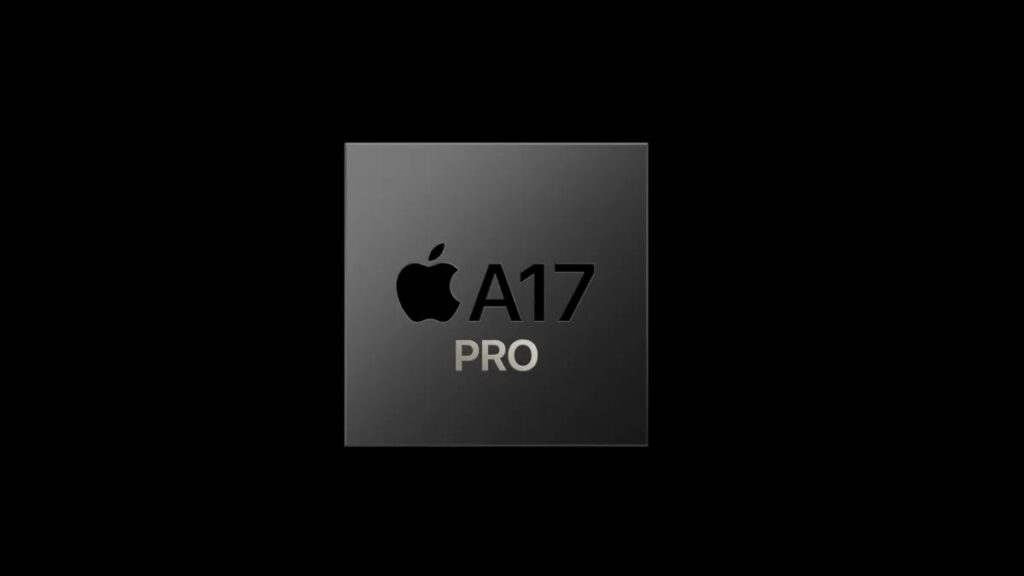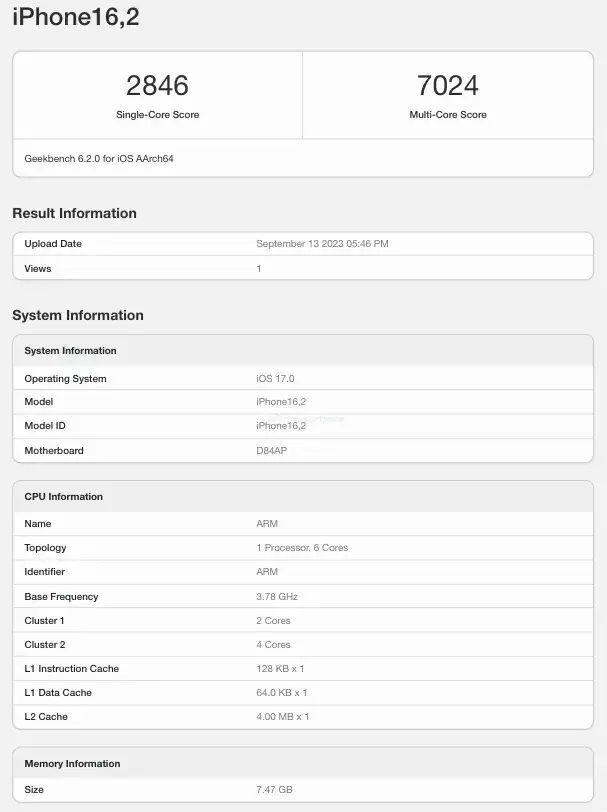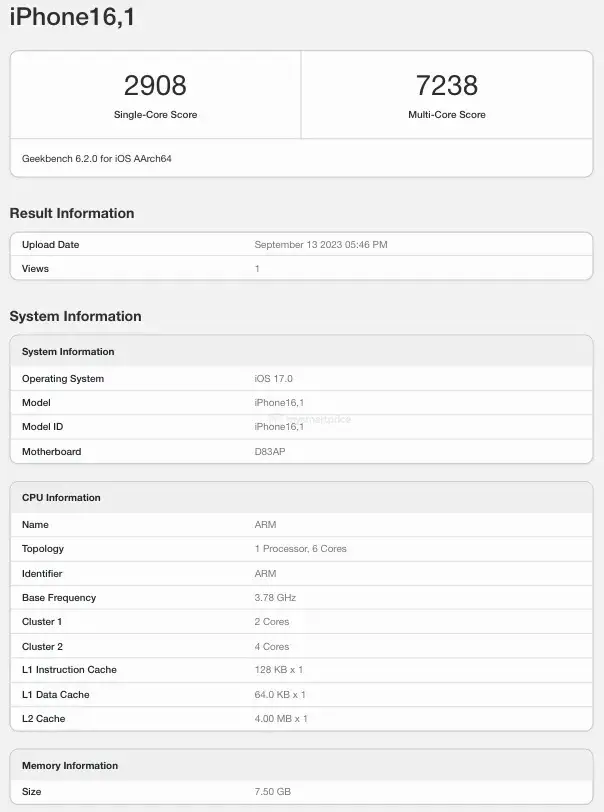The new iPhones are here with the all-new Apple A17 Pro Bionic chip fabbed on a 3nm node. Apple flaunted the GPU performance along with hardware-based ray tracing capabilities and more that powers the iPhone 15 Pro series. However, the first leaked Geekbench (v6.2) results have made their way on the internet to shed more light on the performance, and trust us, it’s not what Apple claimed during the Wonderlust 2023 event.
Deciphering A17 Pro Geekbench Scores
Apple introduced the iPhone 15 and 15 Plus powered by Apple A16 Bionic chipset from last year’s Pro series. However, it reserved the best for its iPhone 15 Pro lineup powering it with a new Apple A17 Pro SoC fabricated by TSMC on a 3nm process, the first commercially available SoC to do so.
The Geekench results for the A17 Pro chipset are as follows:
Test 1: 2,908-points Single Core | 7,238-points Multi Core
Test 2: 2,849-points Single Core | 7,145-points Multi Core
Test 3: 2,914-points Single Core | 7,199-points Multi Core

When comparing the aforementioned A17 Pro Geekbench 6.2 scores with the A16 Bionic chip (which stands at 2,519 and 6,367 points on single-core and multi-core tests), we are barely getting a 13% increase in single-core and approx 12% in multi-core tests. The upgrades are apparent when comparing older gen A-series chipsets as well as Qualcomm Snapdragon 8 Gen 2.
However, performance comparing A16 and A17 Pro shows just a slight uptick north of 10% even after Apple made quite a hype around the upcoming chipset and the 3nm process that would make the chips more powerful and efficient.
These were leaked Geekbench listings which means we will have to wait for more concrete scores arriving in a couple of days from now. It seems like Apple focused on upgrading the GPU performance adding an extra core to the mix. It also has hardware-based ray tracing that will make iPhone 15 Pro support 3D graphics and AVI codec HW decoding when playing AAA games such as Resident Evil 4.
The folks at Beebom compared leaked A17 Pro’s Geekbench scores with Snapdragon 8 Gen 2 and Snapdragon 8 Gen 3 (leaked). No doubt A17 Pro leaves both the chipsets by a distinction in the favour of 1.5 and 1.46 respectively in the single-core while the multi-core results show a distinction of 1.54 and 1.15 respectively. You can see how multi-core scores on the Snapdragon 8 Gen 3 SoC are trying to catch up with that of the A17 Pro. Let’s see what the Geekbench scores for the following look like.
Apple A17 Pro – 3269 | 7666
Snapdragon 8 Gen 2 – 1867 | 4949
Snapdragon 8 Gen 3 – 2233 | 6661
For the unversed, these aren’t the definitive results for the A17 Pro SoC. We will get to see if there’s any changes once the iPhone 15 Pro and Pro Max are available in the market in the coming few days.










